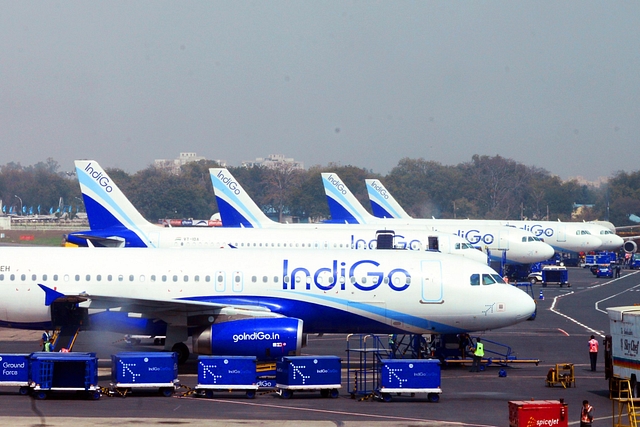
Gangwal Vs Bhatia Feud Calls For One Exit; Two IndiGos Are Better than One
The solution to the Gangwal-Bhatia feud is clearly exit for the former.
If Gangwal believes he can do as well as Bhatia in Indian aviation, he can always re-enter the business.
The friction between IndiGo’s two main promoters, Rakesh Gangwal and Rahul Bhatia, has nothing to do with either strategy or corporate governance, issues that have been raised by Gangwal. It is about money and control.
Under a shareholders’ agreement, Gangwal and Bhatia agreed that the former, despite owning 37 per cent in the airline, will vote with the latter, who owns 38 per cent. The value of their shares, at 12 July morning share prices and rupee-dollar exchange rates, works out to $2.8-2.9 billion.
That is the crux of the issue. Two billionaires may be willing to forgo either control or cash, but not both. If you cannot have control, you want the cash. Gangwal has neither. That is the underlying cause of the conflict.
Gangwal has lobbed the ball into market regulator Securities and Exchange Board of India’s (SEBI’s) court, alleging lapses in corporate governance over issues like related party transactions. But these, according to Bhatia, are less than 0.53 per cent of the company’s turnover, and hence no cause for alarm.
The crux is really the shareholders’ agreement which gives Bhatia control of management and the board, and these provisions have been hard-coded into the company’s articles of association. As Gangwal wrote in his letter to SEBI, “These unusual rights survive even after this coming November when most of the provisions of the current shareholders’ agreement expire, since these rights remain embedded in the articles of association (AoA) of IndiGo and will continue to survive unless the articles are amended by a vote of shareholders holding more than 75 per cent shares.” (Read Gangwal’s letter to SEBI here.)
With Bhatia holding 38 per cent, this can never happen. Gangwal clearly is seeking equal rights as a co-founder, and is bringing SEBI into the dispute primarily to ensure that the AoA can be amended through regulatory pressure. No harm lighting a regulatory fire under Bhatia’s feet so that he is forced to negotiate a better deal.
In India’s long history of joint ownerships, including family-controlled businesses, few have survived prolonged success or failure. Most joint family businesses have split after the second generation, and even joint ventures between Indian and foreign owners have fallen apart after a while (Godrej and P&G, Hero and Honda, Tatas and DoCoMo, TVS and Suzuki, Mahindra and Renault, etc). And IndiGo, with a $7.6 billion market valuation, is arguably the world’s most successful new airline in the last two decades.
IndiGo’s success owed to two factors: a superb strategy of keeping all airline costs to the bare minimum in a low-fare market, and huge strategic errors by its main market rivals, Jet and Kingfisher. Both the rivals ran full service operations initially, and when they got into low-cost flying, they failed to create enough differentiators for their two airlines. Result: they went under. IndiGo won because it understood that India is a low-fare market, and not necessarily friendly to low-cost airlines which need cheaper airports and other fees to break even on lower fares.
A promoter with 37 per cent cannot be just a sleeping partner in an enterprise, for he is effectively unable to leverage his wealth either for use in other ventures or the psychic benefit of control of a successful venture. Clearly, what Gangwal may be looking for is exit on favourable terms – and that is the only logical solution to the IndiGo feud. It is difficult to see Gangwal and Bhatia co-existing in IndiGo even if the AoA is amended, and Gangwal gets a proportionate role in managing the board and the airline.
The time for an exit is opportune, for two of India’s airlines – Air India and Jet Airways – are on the block. With his share of IndiGo’s market valuation, Gangwal can bid for a 51 per cent share of either, with Jet available at bargain basement rates at the bankruptcy courts.
To repeat: the solution to the Gangwal-Bhatia feud is clearly exit for the former. If Gangwal believes he can do as well as Bhatia in Indian aviation, he can always re-enter the business.
Two equal and headstrong promoters are not a formula for continuing success at IndiGo. As far as Indian aviation is concerned, two IndiGos are better than one. May Gangwal and Bhatia go their separate ways. IndiGo’s current 50 per cent market share is unsustainable; it needs a new competitor to challenge it. Who better than Gangwal to provide one?